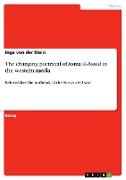The changing portrayal of Asma al-Assad in the western media
BücherAngebote / Angebote:
Essay from the year 2013 in the subject Politics - International Politics - Region: Western Europe, grade: 8, Maastricht University, language: English, abstract: Over the past two years, the civil war in Syria has been one of the major topics in Western media. It began in 2011 with demonstrations against the Assad regime. It is estimated by the United Nations that over 100, 000 have died and millions have been displaced since then (Tomasevic, 2013). One of the major focuses set by the media is on Bashar al-Assad, the current President of Syria, who is called upon by many in- and outside the country to resign (Wilkinson & Smith-Spark, 2013). In the early terms of his Presidency, Assad symbolized a sign of hope for a more modern and democratic Syria - a significant factor was his wife, born and educated in Great Britain, who spoke out publicly for human rights and peace. The two were represented as a glamorous and westernized couple by the press throughout the years. This perception abruptly changed with the uprisings in Syria which have begun in March 2011 (Goodspeed, 2012). However, Bashar al-Assad's wife, Asma, is still portrayed as a caring First Lady by social media such as instagram and facebook used by the Assad Regime (Dewey, 2013). As a result of her presentation as a liberal and peace-aiming figure in the past, many, in particular women, still hope that the country's First Lady will stand up against violence, however, she remains silent until this point ("UN ambassador wives", 2012).
One wonders, how such a positive and one-sided depiction of Asma al-Assad in the Western media was achieved in the first place? Who was holding the reins for this? And why were the journalists more absorbed by her outward appearance than by the fact that she is the wife of a dictator? These are questions this paper examines. Therefore, I studied Western media, in particular fashion magazines, tabloids but also well-respected newspapers such as the Guardian or the Washington Post in order to give my reader a varied overview of the way Asma al-Assad was represented in different tubes of the Western press. The answers serve to consider what the contrasting portrayal of Asma al-Assad can reveal in general about the accuracy and the function of the media in the West, being influenced both by propaganda and the interests of the Western readership. This is why I laid my focus on the portrayal of Asma al-Assad in the Western media, comparing her depiction before and after the outbreak of the civil war in Syria. I have structured this paper into two parts to demonstrate the disparity of her representation in the media in this context.
Folgt in ca. 10 Arbeitstagen




